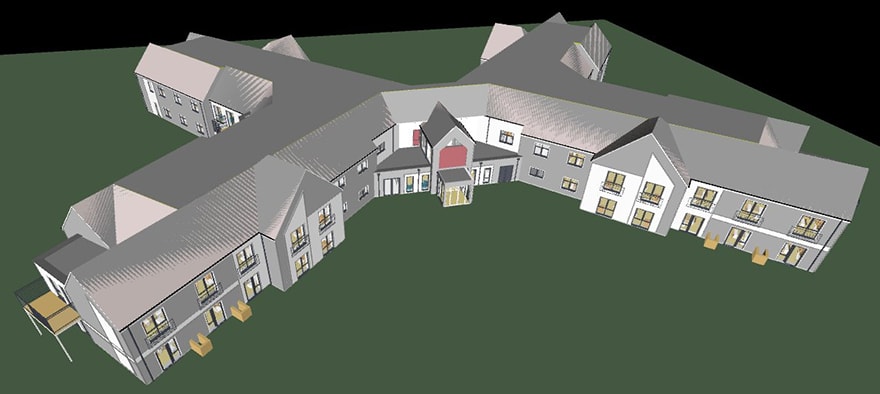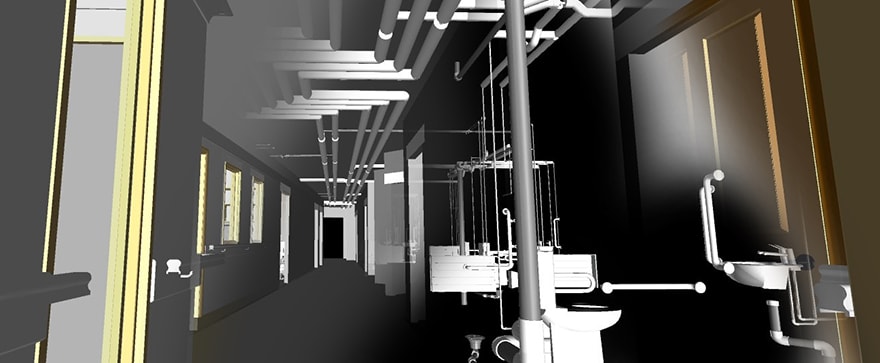- Client: Brackley Investments
- Lead Contractor: Stepnell
- BIM Tools: Autodesk 360
In October, Rugby-based contractor Stepnell began the construction of a £6.5m care home at South Cerney in Gloucestershire. The 64-bed Lakes Care Centre, a specialist dementia care centre, is the culmination of a BIM journey that began four years ago.
David Brill, director at Stepnell, explains: “As a business we identified the benefits BIM could bring to our business in 2012, at board level during our strategic review. In 2013 we began investigating how to actually bring BIM into our programmes and the changes needed in pre-construction. We also started implementing changes to create the right environment.”
However, to actually start using BIM in the real world, the SME contractor had to identify and find appropriate projects. With BIM projects at an appropriate scale few and far between, Stepnell turned to its sister company, developer Brackley Investments.
“Despite the mandate we rarely see anything coming from clients, or client advisers, that requires us to use BIM. The opportunities for SMEs to get involved are quite limited,” says Brill.
“Where buildings are standardised there is a greater opportunity for BIM, and while we were looking to develop our BIM capability we were also investigating how to create a standardised care home design,” he continues. “It soon became clear that this would be an appropriate opportunity for us to utilise BIM.”

Being involved from the beginning of the project, and working with a company in the same group, allowed for practical conversations about what was going to be achieved. The project is what Stepnell describes as Level 2 BIM, adopting a fully coordinated BIM model. However, strictly speaking it is not “Level 2”, as elements such as COBie data drops are not taking place as the company did not want to “bite off more that it can chew”.
Brill says: “There’s a lot of academic theory about BIM, but we needed to actually do it. Basically we discussed with the employer what information we needed and wanted. We agreed that the outputs should be clash analysis, information on the assets and 3D visualisations for clients.”
Stepnell usually generates a lot of data sheets to define the content of each room of the care home. In the past this was created longhand. But as the wall finishes, door type, light fittings etc. can all be delivered from the BIM model, substantial time can be saved, and the data can easily be used again on the next project.
The project has been a learning process in terms of management and company culture, but also in terms of the software being used.

“We used Autodesk 360 as a common data environment (CDE), which worked to a point,” says Brill. “Subsequently we have discovered that paid-for services, such as 4Projects [now Viewpoint for Projects] are more robust. It’s a learning curve – we tried with the free product first, but would now upgrade. Now we are four years into our BIM journey, we are investigating different software packages.”
Although the company cannot quantify it, Brill believes that using BIM has saved Stepnell money on the project as it has reduced the number of clashes.
“We are closer to getting it right the first time,” he says. “It’s difficult to produce evidence, but we believe we saved money. And importantly on the next job we will not have to reinvent the wheel.”
However, although Stepnell has upskilled its own BIM capability, Brill doesn’t foresee the company receiving a huge amount of BIM work in the near future. “That’s the disappointment,” he says. “The aim is to use BIM on all internally-commissioned projects. However, externally there are only a few available for tender that have an integrated model.”
“It’s going to take a long time to change the commercial belief that it’s best to do as little design work as possible,” he concludes.











